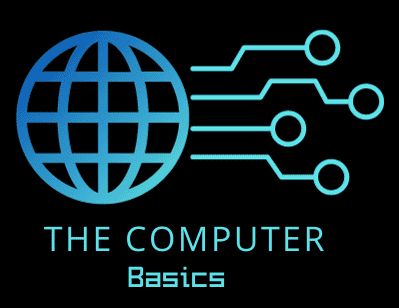Computers have become a major part of our daily lives. They’re not just used for work, but also for entertainment, communication, and personal use.
You might notice it’s time for an upgrade when your machine takes longer to boot up, struggles to run the latest software, or can’t keep pace with your growing media library.
Upgrading your computer doesn’t have to be daunting. Begin by assessing your current needs.
Are you a gamer needing more powerful graphics? A content creator requiring faster processing and more storage? Or perhaps you’re finding your old laptop no longer holds a charge, making portability a chore rather than a convenience. Identifying what you need from your updated setup is crucial.
Once you’ve pinpointed what you want, the real fun begins: researching your options.
There is so much information available on components if you’re building a desktop, or specifications to look out for if you’re going for a new laptop. The first thing to consider is your budget, and don’t forget to account for peripheral devices—they can make a big difference in how you experience your upgraded system.
Recognizing the Need for an Upgrade
When your computer begins to slow down or can’t run new software properly, it might be time to consider an upgrade.
Performance Lag
Noticeable drops in your computer’s performance is a clear indicator that an upgrade is needed. Here are specific signs to look for:
- Extended boot times: If your computer takes much longer to start up, this is often a sign of an overburdened system.
- Frequent stalling: When applications take longer to open, or tasks become unresponsive, your current specs might not be keeping up.
Software Incompatibility
New software can demand more from your hardware. Look out for these signs:
- Error messages: If you are getting consistent errors when trying to install or run newer software, it’s often due to outdated hardware.
- Requirements check: Compare your system specs with the software’s minimum requirements. If your hardware falls short, an upgrade is due.

Hardware Failures
Physical signs of hardware issues shouldn’t be ignored:
| Symptom | Likely Issue |
|---|---|
| Blue Screen Errors | Possible failing RAM or hard drive |
| Overheating | Could be a sign of an aging CPU or inadequate cooling |
Listen for unusual noises coming from your hard drive or fans as they can also signal the end for your current components.
As I am typing this, the fan has been running at full speed on my laptop. This could be a lot of dust build-up, or the CPU is running hot.
Evaluating Your Upgrade Options
Before you decide to upgrade your computer, take a moment. Do you actually need a full new system, or will you save time and money on a parts upgrade?
RAM Expansion
Upgrading your RAM (Random Access Memory) is a quick way to improve multitasking and performance in demanding applications. If your computer struggles to keep up:
- Check the maximum RAM supported by your motherboard.
- Match the RAM type (DDR4, DDR3, etc.) and speed to your current setup.
- Consider at least an 8GB addition for basic tasks or 16GB or more for gaming and professional work.
Storage Upgrade
Improving your storage not only gives you more space but can also speed up your system’s responsiveness.
- Choose between HDD and SSD: HDDs are cost-effective for large storage, but SSDs offer faster performance.
- Look for an SSD with NVMe if you need high-speed data transfer.
- Ensure your motherboard has the necessary ports for your new storage type (SATA or PCIe).
Think about the cost implications though, a large SSD upgrade may cost more than a new laptop or PC, so it’s important to weigh up the pros and cons.
GPU Update
Upgrading your Graphics Processing Unit (GPU) can dramatically enhance gaming and creative work.
- Check compatibility with your motherboard (PCIe slots) and power supply (wattage and connectors).
- Determine the performance increase by comparing your current GPU with the latest models.
- Consider the power efficiency and cooling requirements of the new GPU.
Preparing for the Upgrade

Before you start, you must ensure your data is safe, understand what parts you need, and decide how much you’re willing to spend.
If you are anything like me, it’s easy to go crazy and spend too much money on an upgrade.
Data Backup
First things first, safeguard your data. Back up everything important on an external drive or a cloud service. You never know when things might go sideways, so this step is non-negotiable.
Researching Components
Got everything backed up? Great.
Now let’s figure out what’s under the hood. Look into the latest compatible hardware tailored to your needs. Whether it’s a faster processor, more RAM, or a new graphics card, compatibility with your current system is key.
Setting a Budget
Alright, now let’s talk money. Draw up a realistic budget. It helps to list down your desired components with their prices:
- Processor: $250 – $350
- RAM: $100 – $150
- Graphics Card: $200 – $500
Remember, don’t skimp, but don’t break the bank either. There’s a sweet spot that will give your computer the boost it needs without emptying your wallet.
Executing the Upgrade

Once you’ve determined your computer is due for an upgrade, the execution process is your next step. It’s all about installing the right components, ensuring system compatibility, and keeping software up to date.
Installing New Hardware
Before you pop open your computer case, turn off and unplug your machine. Static electricity can damage computer parts, so ground yourself first to avoid any mishaps.
Begin by installing the new hardware, whether that’s RAM, a new graphics card, or a faster SSD. Each component has its slot or socket; make sure they’re firmly and correctly placed. For example:
- RAM: Press down firmly until the side clips click.
- Graphics Card: Insert into the PCIe x16 slot until it clicks and screw into the case.
- SSD/HDD: Connect the SATA cable and power connectors; secure the drive in the bay.
System Compatibility Check
After installing your new hardware, you need to check that your system recognizes the upgrades. If you are installing multiple items, I like to do a check after each one, else you may not know which part is causing the issue.
Power up your computer and enter the BIOS (Basic Input/Output System) by pressing the key as prompted during startup, usually F2, Del, or Esc. Here, you can see if the new hardware is listed—like your expanded memory under the RAM settings.
If you encounter any issues, double-check the connections and compatibility with your motherboard’s documentation.
Driver and Software Update
The final step in the hardware upgrade process is ensuring your drivers and software are up to date.
Drivers allow your operating system to recognize and work with the new hardware. Visit the manufacturers’ websites to download the latest drivers for your components.
For instance, a new Nvidia graphics card will require the most recent driver from the Nvidia website.
After installing drivers, update your operating system and software to make the most of your hardware improvements.
Post-Upgrade Considerations

After upgrading your computer, check to see if everything is running smoothly and optimize your system for performance.
Testing System Stability
Starting off, you’ll want to check that your computer is stable. Use software like Prime95 or AIDA64 to stress-test your system. This helps to verify that components like your CPU, memory, and power supply are working together well under load. Look for signs of instability like crashing, freezing, or error messages. If any issues arise:
- Check temperatures: Make sure your cooling solutions are sufficient.
- Re-seat components: Sometimes, simply re-installing hardware can resolve contact issues. But make sure the system is powered off completely. I remove the power cable, just to be on the safe side.
Tweaking for Optimal Performance
Once you’ve confirmed stability, it’s time to fine-tune.
Begin with updating your drivers. This is especially important for your GPU and motherboard. Updated drivers can often lead to better performance and stability.
Adjust your settings as follows:
- BIOS settings: Ensure they are optimized for your new hardware.
- Power settings: Switch to a high-performance plan if needed.
- Storage management: If you’ve installed a new SSD, enable features like TRIM for prolonged efficiency and longevity.
Keep an eye on your system’s resource usage through Task Manager to identify and address any unexpected bottlenecks.
Like anything, your computer has a lifespan. Recognizing when it’s nearing the end of its effectiveness can save you a lot of frustration.

